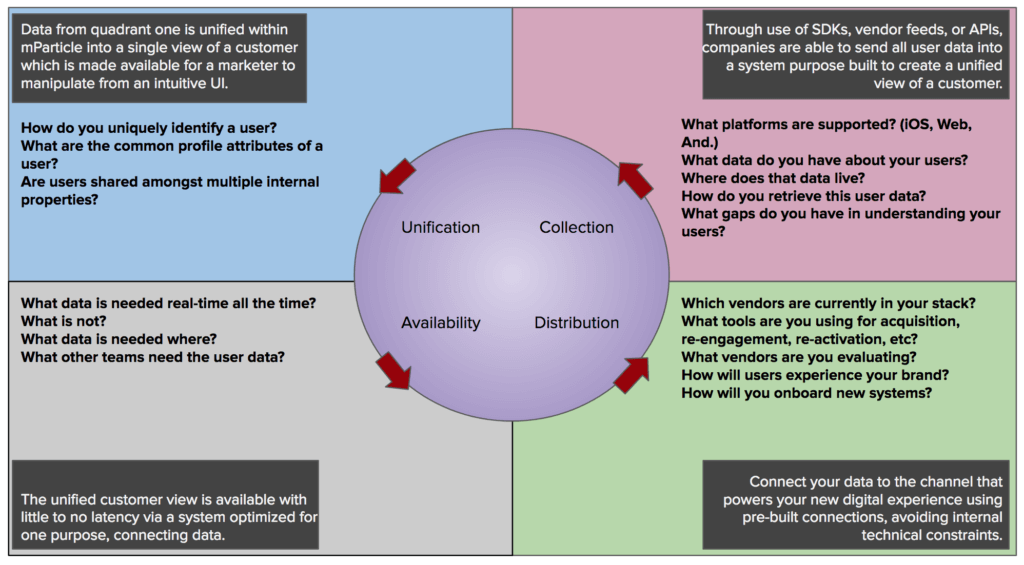Plan your digital evolution
The marketing landscape is changing at a lightning pace. To take advantage of the martech boom, you need to plan your digital evolution.

In 2005, Staples marketed a fictitious red button with magical properties and a short catchphrase, “That was easy!” Within a year, Staples sold nearly two million red easy buttons, acquiring millions of loyal followers and dramatically increasing their brand recognition.
There isn’t an easy button for building innovative digital experiences. Brand marketers struggle to create relevant experiences that meet customers demands, typically falling short of expectations due to limited technical resources and antiquated infrastructure. In this era of Digital Darwinism, where technology is evolving faster than businesses can adapt, marketing leaders must avoid Procrustean efforts and instead plan a digital strategy that supports their natural evolution.
Evolve your stack
Building successful digital experiences is an exercise of habit, strategic planning, executing, and assessing where you land to iterate through this process again. For marketers already struggling to keep pace with the changing mobile ecosystem, executing a comprehensive digital experience may seem impossible. To manage the ever-changing technology landscape marketers should rely on their source: the data. Access, control, and distribution of data are the precursors to a successful execution of any innovative digital experience.
Customer data platforms
Raab Associates defines a customer data platform (CDP) as “a marketer-managed system that creates a persistent, unified customer database that is accessible to other systems.” Brands can transform their businesses by employing a CDP as a faster, more efficient solution rather than trying to solve many isolated problems at once with individual solutions. Having a unified customer experience has become the highest priority for many marketers, but when is the right time to add a CDP? The answer is always now!
As a Customer Data Platform, mParticle provides the building blocks to support a successful evolution of a brand, regardless of the maturity level of the business. Our blueprint to success is a recursive four quadrant process that examines the current state of marketers’ digital efforts to determine an implementation that fits their digital experience goals.

We understand that no two businesses are alike, which is why we value a prescriptive approach to implementation. Startup businesses typically leverage tactics that promote flexibility and offer cost-effective options to support their digital evolution strategy. By incorporating a CDP early, young brands have used our blueprint for success by:
- Leveraging a single Software Development Kit (SDK) to consolidate data collection: The number of vendors in evaluation and SDKs needed in your site or app are not directly correlated. Use a single SDK to collect user behavioral data and avoid unnecessary vendor bloat on your properties that could impact performance.
- Developing a comprehensive data strategy: Document all events, attributes, and data points about your users to power your digital strategy. This is not a futile exercise; having an artifact of the data points that you collect and why, will inform your strategy immediately, and as your brand evolves.
- Optimizing the association of first-party data: Make data available wherever it is needed and ensure that latency does not affect any experience. Streaming data from a single source of truth becomes fundamental to supporting growth and data integrity. Through use of a CDP, engineering dependencies are minimized and marketers are empowered to independently test new tools and own customer data streams.
- Evaluating multiple vendors prior to selection: Complete due diligence by testing multiple freemium tools against each other during the evaluation phase. Once you’ve collected enough real data and hands-on time with the tools, decisions are made in based on data and experience, not hope.
Not every company evaluating a CDP is a startup, which marks the need for different tactics better suited for larger businesses. Marketers of more mature businesses must leverage pre-existing architecture and manage conflicting priorities as they execute their digital evolution strategy. These companies have used our blueprint for success by:
- Combining data sources across multiple touch points and vendors: For some companies, SDKs may already be in place across properties and removing them may not be an option. Through the use of HTTP APIs, companies have the option of using an SDK or streaming data from anywhere into their CDP for centralization.
- Decoupling identity resolution from data strategy: Users may have multiple apps that are associated with a parent company. For example, Postmates has users who both consume and deliver food. How Postmates identifies, tracks, and engages their users is unique, thus a unique strategy for identification drives the evolution of Postmates’ digital strategy.
- Capitalizing on data distribution: Wherever possible, marketers cut operational costs and eliminate wasteful media spend to maximize partner efficacy. Our clients recoup lost budget by applying efficiency filters on data sent to individual vendors through an intuitive user interface.
- Accessing additional technical resources with domain expertise: Consult with an assigned Customer Success Manager on how companies in similar verticals have tackled problems or learn about the latest technology trends. Consider a CDP an extension of your technical infrastructure that provides personnel with deep tribal knowledge across the MarTech ecosystem.
Evaluating and investing in a CDP reinvents the traditional approach to developing innovative digital experiences. A CDP captures all of your data to a single source and can distribute it to any execution tool. Once in place, switching your analytics vendor, onboarding the latest emerging technology, or streaming data to new endpoints becomes a fundamentally simple evolution.


